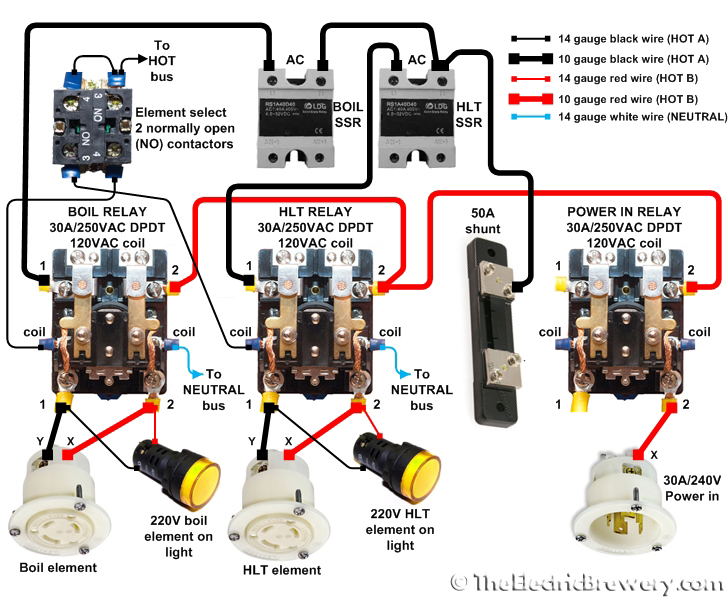Liveforliving
Well-Known Member
- Joined
- Aug 3, 2014
- Messages
- 59
- Reaction score
- 2
In trying to be DYI in electric brewing, I'm creating my own control panel. I'm modifying a plan that I believe is a popular one on Instructables: http://www.instructables.com/id/Electric-Brewery-Control-Panel-on-the-Cheap/?ALLSTEPS
Looking at the wiring diagram (attached), it's a 220v circuit, but has a 110 outlet for the pumps. How can you have a 110 outlet connected on this circuit? Won't that either destroy the outlet or fry the pumps?
Also, these plans have it to where the HLT or the BK is on at any given time. I want to run both at the same time so I can do my mash water from the BK and the HERMS & Sparge water from the HLT. Will I be able to connect one 220v 30amp cord into this to run everything with a 60amp breaker?

Looking at the wiring diagram (attached), it's a 220v circuit, but has a 110 outlet for the pumps. How can you have a 110 outlet connected on this circuit? Won't that either destroy the outlet or fry the pumps?
Also, these plans have it to where the HLT or the BK is on at any given time. I want to run both at the same time so I can do my mash water from the BK and the HERMS & Sparge water from the HLT. Will I be able to connect one 220v 30amp cord into this to run everything with a 60amp breaker?





